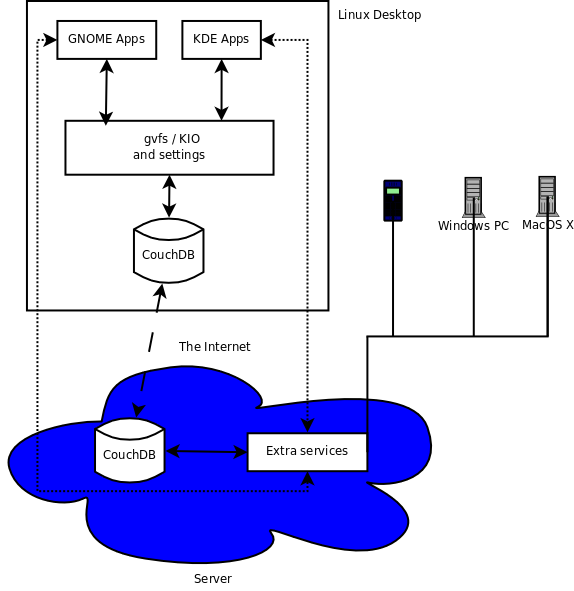Ubuntu One‘s SyncDaemon (the process that takes care of synchronizing your files between the cloud and the desktop) has a DBus interface for applications to control and get notifications from it about what it is doing. This interface was being used in the Nautilus plugin and other desktop tools contained in ubuntuone-client itself. Even though powerful and straightforward, we haven’t seen many applications using it, since usually 3rd party applications don’t want to be dealing with the low level DBus API themselves.
But this is now history, since I introduce you to libsyncdaemon, a GObject wrapper on top of the DBus API which makes it very easy to communicate with SyncDaemon, as well as improving a lot the performance compared to accessing the DBus API directly (thanks to its use of caches, to avoid DBus calls repeating when no needed) and containing high level functions that would allow applications to, for instance, publish a file on Ubuntu One with just one call:
SyncdaemonDaemon *daemon = syncdaemon_daemon_new ();
syncdaemon_daemon_publish_file (daemon, "/home/user/myphoto.jpg");
But before you run to another place after seeing this C code, note that it includes bindings for many languages (Python, JavaScript, etc) for free, thanks to gobject-introspection. So, the same code in Python, for instance, would be:
daemon = Syncdaemon.Daemon ()
daemon.publish_file ("/home/user/myphoto.jpg")
So now, the next step is to start adding support for sharing/publishing files in Ubuntu One to many desktop applications, like, for instance (ideas stolen from Stuart Langridge):
- Publish screenshots directly from gnome-screenshot tool
- Sharing photos from f-spot/shotwell/etc
- etc…
This, along with the already existing desktop APIs (desktopcouch, couchdb-glib, libubuntuone), makes integration of 3rd party applications into Ubuntu One a very easy thing.


